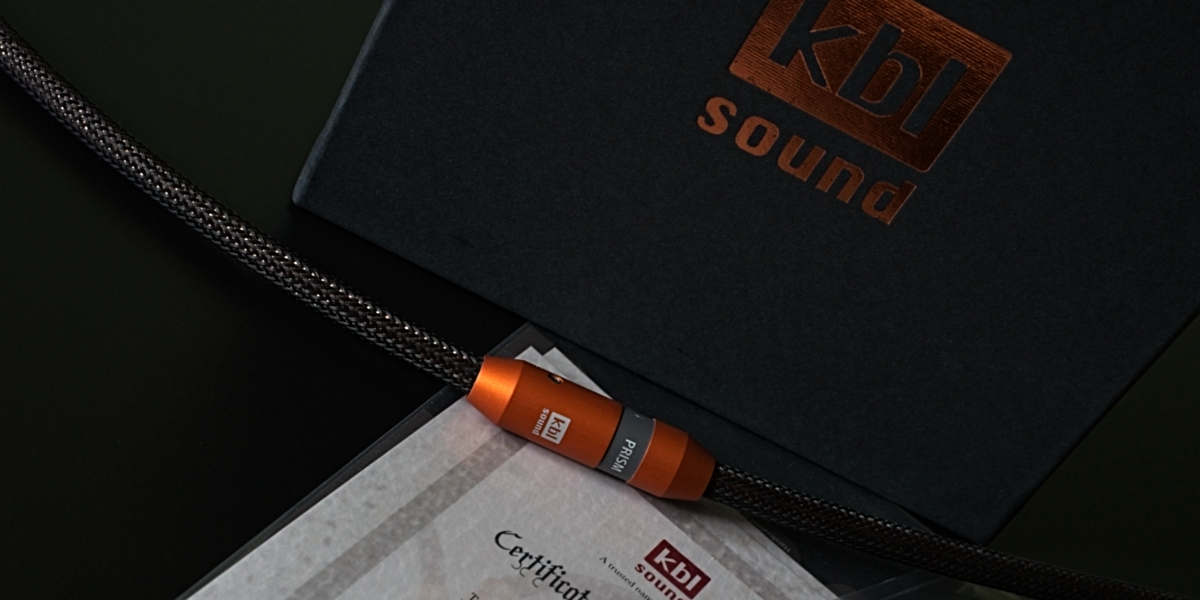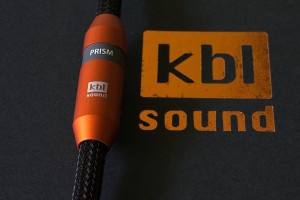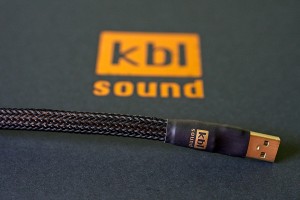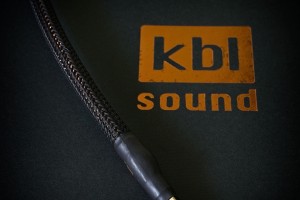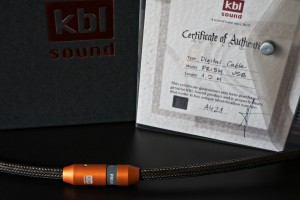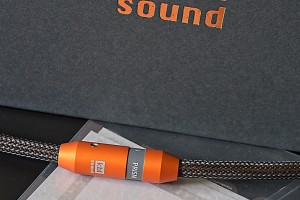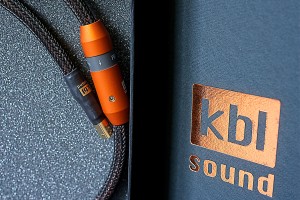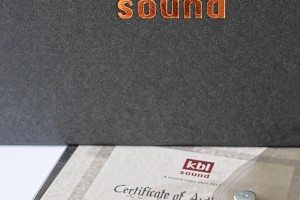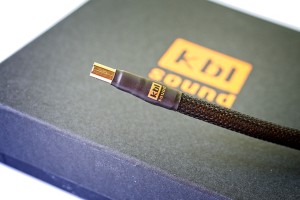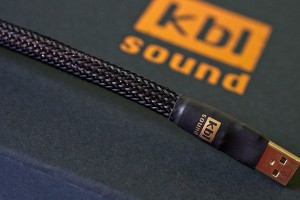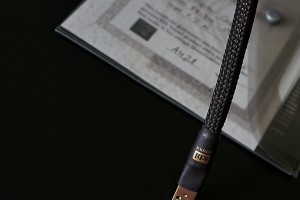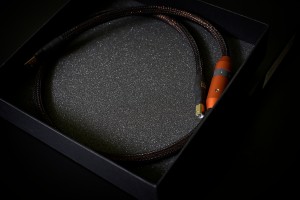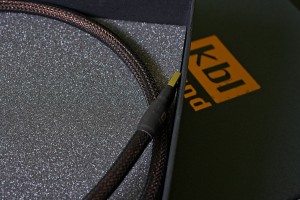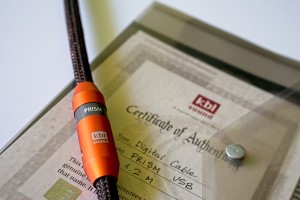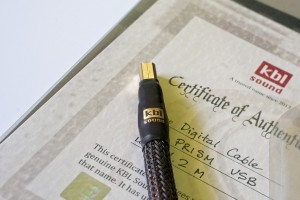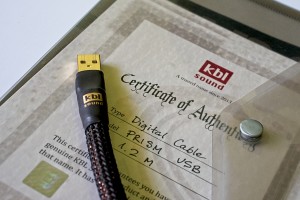Not that long I had a chance to review two KBL Sound digital cables which matched their analog counterparts I’d known before in terms of excellent performance. Now it is time to try yet another of their products, the KBL Sound Prism USB cable.
Introduction
The first take on KBL Sound digital cables was a bit „out of character” for me, as I don’t use coaxial nor AES/EBU cables in my system daily. Yet, utilizing some reviewed loaners and comparing them with other brands’ products, I could assess and appreciate both Prism cables’ performance. On the other hand, USB cables are my bread and butter, as they say, because next to J.Sikora’s turntable, my custom music server combined (via USB cable) with Lampizator Pacific 2 DAC is used every day as my reference source. It is also the reason why I tested many products of this type.
The one I use daily is David Laboga Custom Audio Expression Emerald Mk 2 (you can find the review of its original version HERE). It is the least expensive model (of three) in this brand’s lineup, yet so good, that it has been boldly competing against any tested competitor ever since I got it and never gave up without a fight. I will not claim that it is the best USB cable I’ve ever heard in my system, but it’s definitely a really good one, offering the best bang for the buck. The ones that outperformed it cost more, way, way more like the tested KBL Sound Prism USB. Still, I am always willing to compare my references with any competitor, and the one by KBL Sound, based on all my previous analog and digital experiences with their products, seemed to promise a lot. I wanted to discover the difference it could introduce to my setup compared to the Expression Emerald Mk 2.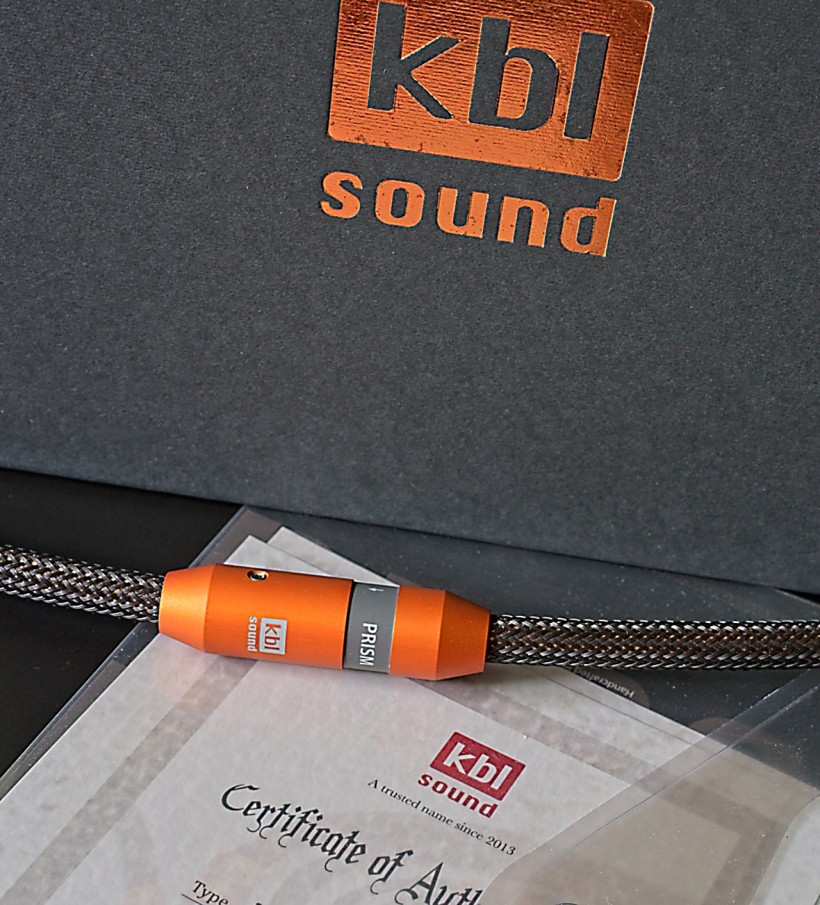
Design and features
For this part I could simply use the copy & paste function, as the designer, Mr. Robert Szczerbowski, told me already when I tested coaxial and AES/EBU Prisms, that all digital interconnects are identical except for plugs and impedance. Since not all of you necessarily read the other review (available HERE) let me go over a few design features that the manufacturer reveals. The standard length of each type is the same – 1,2m (longer cables are available upon order). Interestingly, USB, which is the youngest design among the three, initially was made as a 1m long cable, but ultimately 1,2m was selected as the optimal length in terms of both, convenience of use and performance. The conductors are made of high-purity mono-crystal copper, and the wires are hand-polished. The designer decided to use several dielectrics including air, non-colored PTFE, kapton, polyurethane, and polyolefin.
Another important feature of the design is wide-band shielding using copper, and tinned copper. Also, the external sleeving is a part of the cable shielding that protects the cable against high-frequency noise. It is a braided sleeve made of anti-static carbon-infused polymer. The manufacturer does not share specific information regarding the plugs he uses, but they look good. Each cable is terminated with a USB plug A at one end and USB type B at the other. It is not the most flexible USB cable but enough so that connecting it on both ends should not be a problem. KBL Sound Prism USB comes in a typical for KBL Sound, simple but nice looking black box. Inside, one finds the cable but also a Certificate of Authenticity with the cable’s serial number.
Sound
Except for my reference setup with a custom server and LampizatOr Pacific 2 DAC I also used an opportunity that presented itself in the form of a loan, namely the new, very good-sounding Audio Reveal Hercules DAC. The KBL Sound Prism USB was compared to my Emerald Mk 2 cable, but also to another loaner, TARA Labs The Artist (price-wise similar to Prism).
Replacing quickly Emerald with Prism immediately revealed a certain similarity between them, but also between the USB Prism and its coaxial and AES/EBU siblings. The similarity in terms of general sonic character, one that for the latter two I described as a very ‘non-digital’ or, as I like to call it, analog. It was also clear that there were differences between my cable and the tested one and we will get to that in a minute. For the moment though, my focus was on this particular, general aspect of the performance, which I always find very promising for any (assessed by me) digital component.
Why is it so important (for me!)? For one, I do generally speaking prefer analog (please notice „I prefer” which doesn’t suggest superiority, just personal preference), very musical, natural sound, so even when it comes to digital products I still look for impressions somewhat similar to those offered by my favorite vinyl records. Secondly, „analog” also means for me, that the sound is natural, and has a good flow, which usually translates into fatigue-free listening, which makes my job, the assessment part of it, way easier and more pleasant.
The switching between cables happened in the middle of Victor Wooten’s „A Show Of Hands 15” album. Compared to my Emerald Mk 2 (apart from the already discussed general sonic character) two features of the KBL Sound Prism USB’s presentation stood out right from the start. Wooten’s bass seemed to go even a bit deeper and with a touch more powerful slam. His bass guitar had more body, thus sounding more visceral when needed. Also, the decay and reverb, although not very important features of this particular recording, seemed to extend a bit longer making the presentation even more spacious. All that made his performance even more impressive, more live-like, a highly welcomed feature, at least from my perspective.
I noted to myself to check it (the reverb) out later with some acoustic recordings and as soon as I played one (Ray Brown Trio’s concert) I got a firm confirmation on that. It was not about Emerald lacking in this regard, but just that Prism added even more on top of what my cable had to offer. And it still seemed very natural, or accurate, if you will, at that. It felt more as if the KBL Sound Prism USB revealed more of what was there, in the recording, rather than added something by itself. Then it came to me – it was a quality that all Prism cables seemed to share, as the coaxial and AES/EBU versions had also impressed me with particularly long and rich reverb when I reviewed them. It’s just something this family of digital cables by KBL Sound does – that’s a hint for you if your system isn’t quite as good in this regard as you wish it to be – these cables are worth checking out.
The album in question (Wooten’s, that is) is a bit a-typical one. While generally it is an instrumental recording, apart from the music itself there are quite a lot of human voices there, mainly talking, not singing, including the artist himself, and even a child. Human voice is the sound we are all most familiar with, hence it is one of the most demanding elements of any (vocal) recording to convey in a truly realistic and natural way. I had to admit that while I loved my Emerald, Prism USB did it in an even more convincing, more palpable, more natural, more present way. In that, it reminded me more of the top DL Custom Audio USB cable named Ruby (see the review HERE). Prism created an extremely convincing presence of any talking or singing person, so much so, that it was hard to resist the feeling that they were there, in my room communicating with me directly and involving me emotionally in any story they tried to tell.
Another impressive feature of this cable is quite high energy of the reproduced sound. I’ve mentioned it many times in my reviews – the energy of the sound is one of its inherent features that hurt most in the whole process of recording and replaying music. Yet, some components limit the losses (on the replay’s end, that is). KBL Sound Prism USB turned out to be one of them. It was even more obvious when I replaced my speakers with the impressive Fonica International FLAG L, isodynamic (planar-magnetic) speakers, which are incredibly dynamic and reproduce sound energy on a level that only very few other speakers I know do.
Obviously, they too depend on the signal that ultimately an amplifier feeds them with, hence the role of every component in the signal’s path. Prism USB did transfer whatever energy was captured in the recordings even better than Emerald Mk 2 (almost as good as the aforementioned Ruby), I had no doubts about it. That element of the presentation alone significantly increased the level of realism of the whole presentation. The FLAG L are also amazingly fast and dynamic speakers and again the tested cable proved itself to convey all, even the tiniest, and the fastest impulses serving them with proper timing, keeping excellent pace and rhythm. As a result, particularly the live track ending the Wooten’s album, sounded and felt (!) very realistic, very here and now. His bass „kicked” really hard, when needed, and extended very low, again lower (and harder) than with my Emerald.
Another one of the key elements of this amazingly realistic presentation was the richness and weight of the lowest tones of his electric bass. I could not only hear but also feel it in my bones in a more visceral way than with my everyday cable. Still, while it was the bass that grabbed and commended my attention almost exclusively at first, the richness, and fullness of the sound extended throughout the whole range and all instruments. The midrange, a key range to almost any music genre, as expected based on previous experience with KBL Sound cables, impressed me with its richness, and smoothness, but combined with clarity and transparency allowing me not only to hear all the tiny details, but also peak into the very deep layers of every recording. I got that not that usual for digital products feel of a natural, organic, and also highly expressive communion with any well-recorded music I played.
That’s also where Prism and the aforementioned Tara Labs The Artist showed me, that equally refined and satisfying (me as a listener) effects can be achieved using various means. The latter focused a bit more on precision, transparency, and accuracy in conveying every little detail found in every good recording. The KBL Sound Prism due to its high resolution, and very good differentiation, retrieved as much information as the competitor but focused more on weaving a dense, rich, tuneful, cohesive whole. Tara Labs, on the other hand, while it also offered a very coherent and musical whole it… maybe not as much as emphasized, but at least let the listener clearly know about all those tiny musical and non-musical details.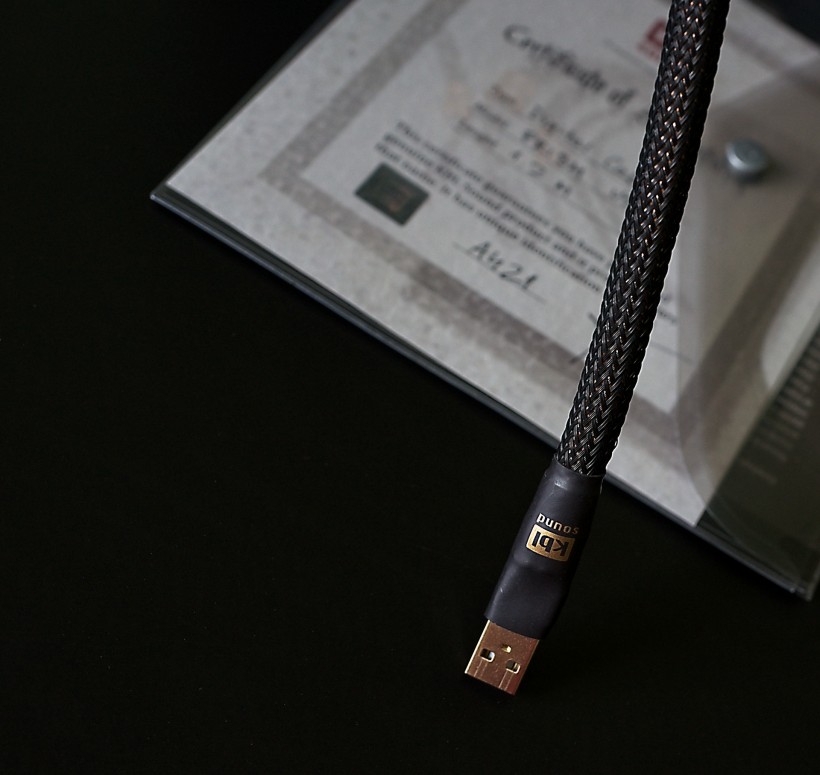
So if you dream about hearing a chair a musician sits on squeaking while he/she plays, or a cough coming from the back of the audience, Tara Labs will make it easier. Prism is less analytical and more focused on the music as a whole and a bit less on the details. The former was not quite as rich as the tested cable, hence the latter seemed a bit warmer. With Tara Labs, the tonal balance was set a little bit higher than with Prism so it sounded a touch brighter, but not bright! The American cable was also even slightly more revealing, and more focused on all the tiny little details bringing both, the wanted and unwanted ones, more forward.
On the one hand, it meant that those who love to study the details, dive deep into recording, and analyze it would probably choose The Artists over Prism. On the other hand, though, I believe that those, who, like me, prefer richer, smoother, even more coherent, and focused primarily on music presentation will probably be more satisfied with the tested USB cable. To be clear, I have overblown the characters of both to emphasize the difference between them, but in reality, the differences are not that big. Should be enough to choose between the two, but not enough to love one and hate the other.
Just to confirm my findings I reached for Jean-Willy Kunz’s „Impressions” album. It was recorded in Montreal at La Maison Symphonique. The acoustic environment of the venue was skilfully captured by recording engineers and beautifully conveyed by my system benefiting something extra from using KBL Sound Prism USB instead of my cable. The sound of bass, drums, clarinet, trombone, saxophones, and GrandOrgue, as presented with tested cable, was not only particularly spatial, resolving, open, and transparent but also truly vibrant, agile, and palpable. And, surprisingly, warm, but in a very natural way.
It was interesting because the metal elements of the percussion seemed to sound very clear, pure, strong, and „sparky”, yet never harsh, never aggressive. Neither did the upper registers of clarinet or saxophones, which proved once more, that KBL Sound Prism USB mastered delivering as natural, uncolored sound as possible. Also presentation of the GrandOrgue was impressive because momentarily it sounded like the largest possible organs, delivering powerful, deep, almost visceral sound additionally boosted by the acoustic environment of the venue. I have to say, that in this recording, the combination of transparency and clarity of the sound with its richness and ultimately naturalness, was astounding. I loved how convincing it sounded with Prism.
Moving on to a different repertoire and having recently attended Slash’s concert in Katowice I had to reach for some of his, and other rock, albums. The above-average energy, excellent timing, and high dynamics combined with rich, dense, saturated midrange and lack of sharp edges anywhere in the frequency range provided by the KBL Sound Prism USB cable ensured a highly enjoyable and engaging presentation of such music. All guitar performances and charismatic vocals were presented in an exciting, truly attention-grabbing, and deeply engaging way which reminded me of Slash and many other rock artists’ live performances. As with almost any music before, in this rock stage of my assessment, the great PRAT, high energy, and dynamics of this presentation translated into a highly immersive, head-spinning, feet-tapping experience, or simply put – fun!
Even more so since, the same as the other Prism cables, the tested USB version, while highly resolving, well-differentiating, and pretty revealing, did not come out as a fun-killer, meaning it did not emphasize the imperfections of these recordings. Sure, these, such as some compression, a little bit of harsh treble and/or upper midrange, and in some cases rather flat dynamics, they were all still there. The tested cable did not ignore them, did not hide them. I heard them sort of in the background, not in the front of the music, not even mixed with it. That allowed me to ignore it/forget about it and fully enjoy all those non-audiophile, yet so lively, so engaging rock and hard rock albums.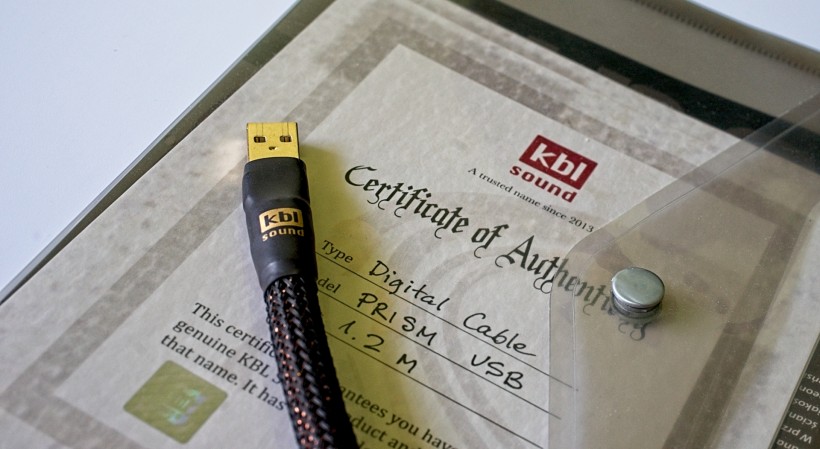
Summary
The results of the KBL Sound Prism USB cable assessment are not surprising. First of all, it’s a close cousin of the other two, already reviewed Prism digital cables, that shares the name with them, so it’s logical that a satisfied user of one of them when reaching for another type expects similar performance. Secondly, the analog cables I know even better, suggest what the brand’s designer considers (his) good sound and what qualities he is after. All the digital cables I reviewed, including the USB, sound very non-digital or analog. The sound is rich, smooth, and natural, and the music has a great flow with it. What’s more, it is one of those products that are particularly good at preserving whatever sound energy recording engineers managed to capture on tape or in files. So whatever is your favorite music genre with KBL Sound Prism USB you are going to have a lot of fun, and high-quality fun at that! If that’s what you like you should give it a try!
Prices (when reviewed):
- KBL SOUND PRISM USB D-331U 1,2 m: 1.750 EUR (+450 EUR per each additional 0,5m)
Manufacturer: KBL SOUND
Technical specifications (according to the manufacturer):
- Conductors: pure mono-crystal copper, hand-polished
- Gauge 22 AWG
- Dielectrics: air, non-colored PTFE, kapton, polyurethane, polyolefin
- Wideband shielding: copper, tinned copper
- Braided sleeve: Anti-static Carbon Infused polymer Sleeving for high-frequency shielding
- Standard length: 1,2 m
- Other lengths upon request
Associated equipment:
- Digital source: a custom passive server with WIN10, Roon, Fidelizer Pro 7.10, JCAT NET XE, and JCAT USB XE cards with FERRUM HYPSOS Signature power supply, KECES P8 (mono) linear power supply for the server, JCAT USB Isolator
- D/A Converter: LampizatOr Pacific 2 +Ideon Audio 3R Master Time (USB signal regenerator)
- Analog front end: J.Sikora Standard MAX turntable, J.Sikora KV12 tonearm, J.Sikora KV12 MAX tonearm, AirTight PC-3, phono stages: Grandinote Celio MK IV, ESE Lab Nibiru V 5.
- Power amplifiers: GrandiNote Shinai, Circle Labs M200, Art Audio Symphony II (modified)
- Preamplifier: Circle Labs P300
- Loudspeakers: GrandiNote MACH4, Ubiq Audio Model ONE Duelund Edition.
- Interconnects: Bastanis Imperial x2, Soyaton Benchmark, Hijiri Million, Hijiri HCI-20, KBL Sound Himalaya II XLR, David Laboga Expression Emerald USB, David Laboga Digital Sound Wave Sapphire Ethernet
- Speaker cables: Soyaton Benchmark
- Power cables: LessLoss DFPC Signature, Gigawatt LC-3
- Power: Gigawatt PF-2 MK2 and Gigawatt PC-3 SE Evo+; a custom power line with Gigawatt LC-Y in-wall cable; Gigawatt G-044 Schuko and Furutech FT-SWS-D (R)
- Network: Silent Angel Bonn N8 + Silent Angel Forester F1 + optical LAN isolator
- Racks: Base VI, Rogoz Audio 3RP3/BBS
- Anti-vibration accessories: ROGOZ-AUDIO SMO40 and CPPB16 platforms and ROGOZ AUDIO BW40MKII feet, Franc Accessories Ceramic Disc Slim Feet and Wood Block Platform, Graphite Audio CIS-35 and IC-35


